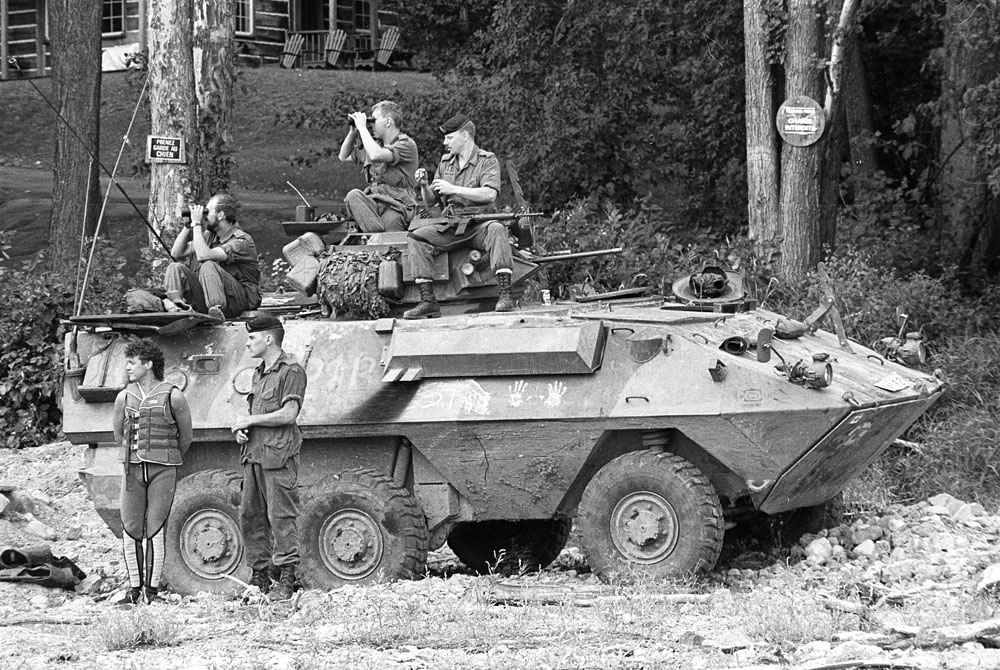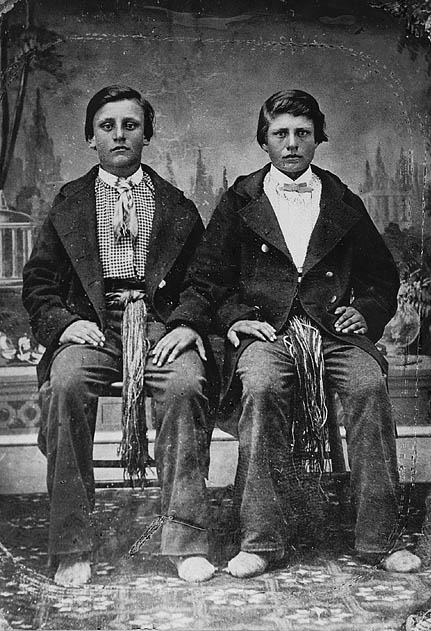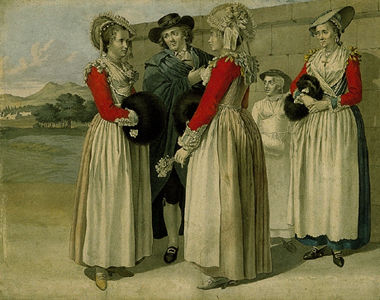Browse "Things"
-
Article
Armed Forces Bands in Canada
Large regimental bands first came to Canada in the late 18th century. By 1869, there were some 46 bands in the Canadian militia. The first regular armed forces bands in Canada were formed in 1899. Their main purpose has been to provide music for military or public functions. As of 2023, there were a total of 73 bands in the Canadian Armed Forces: 53 in the Army, 12 in the Air Force, and 8 in the Navy.
"https://d2ttikhf7xbzbs.cloudfront.net/media/media/1007px-438_Squadron_RCAF_Band_1960s.jpg" // resources/views/front/categories/view.blade.php
https://d2ttikhf7xbzbs.cloudfront.net/media/media/1007px-438_Squadron_RCAF_Band_1960s.jpg
-
Article
Armenian Music in Canada
Beginning about 1900, but mostly from 1950 to 1965, some 20,000 Armenians emigrated to Canada from the Middle East.
"https://development.thecanadianencyclopedia.ca/images/tce_placeholder.jpg?v=e9dca980c9bdb3aa11e832e7ea94f5d9" // resources/views/front/categories/view.blade.php
https://development.thecanadianencyclopedia.ca/images/tce_placeholder.jpg?v=e9dca980c9bdb3aa11e832e7ea94f5d9
-
Article
Armoured Vehicle General Purpose (AVGP)
The Armoured Vehicle General Purpose was a series of armoured fighting vehicles in service with the Canadian Army from 1978 to 2005. All three versions — Cougar, Grizzly and Husky — used a common hull based on the six-wheeled Swiss MOWAG Piranha 1. The main difference was the turret, or lack thereof. All versions were equipped with propellers and could swim. When production was completed in 1982, 491 vehicles had been built.
"https://d2ttikhf7xbzbs.cloudfront.net/AVGP/AVGP-Grizzly-5301185.jpg" // resources/views/front/categories/view.blade.php
https://d2ttikhf7xbzbs.cloudfront.net/AVGP/AVGP-Grizzly-5301185.jpg
-
Article
Arms and the Men of the War of 1812
The British land forces that defended British North America during the War of 1812 were drawn from a number of organizations. The British "army" of the time consisted of the infantry, cavalry, the Royal Waggon Train and the Royal Sappers and Miners.
"https://development.thecanadianencyclopedia.ca/images/tce_placeholder.jpg?v=e9dca980c9bdb3aa11e832e7ea94f5d9" // resources/views/front/categories/view.blade.php
https://development.thecanadianencyclopedia.ca/images/tce_placeholder.jpg?v=e9dca980c9bdb3aa11e832e7ea94f5d9
-
Article
Army Benevolent Fund Board
The Army Benevolent Fund Board was established under the Army Benevolent Fund Act (1947) to administer funds in special accounts existing in the Consolidated Revenue Fund.
"https://development.thecanadianencyclopedia.ca/images/tce_placeholder.jpg?v=e9dca980c9bdb3aa11e832e7ea94f5d9" // resources/views/front/categories/view.blade.php
https://development.thecanadianencyclopedia.ca/images/tce_placeholder.jpg?v=e9dca980c9bdb3aa11e832e7ea94f5d9
-
Article
Aroostook War
The Aroostook War was a confrontation between British and Maine authorities in disputed territory known as Madawaska. During the Napoleonic Wars, Britain was in dire need of wood and the region’s pine forests became an important commodity. Claimed by both Maine and New Brunswick, Madawaska became fertile ground for confrontations between the two. The war peaked in 1838‒39 when the governor of Maine, John Fairfield, sent a group, led by Rufus McIntyre, to stop “provincials” from entering territory that Fairfield believed was Maine’s. McIntyre was captured and accused of invading the colony. The conflict ended in 1842 with the Webster-Ashburton Treaty, which divided the territory along the Saint John River.
"https://d2ttikhf7xbzbs.cloudfront.net/media/media/0052e055-bf0b-4980-8f10-08f926f15b9b.jpg" // resources/views/front/categories/view.blade.php
https://d2ttikhf7xbzbs.cloudfront.net/media/media/0052e055-bf0b-4980-8f10-08f926f15b9b.jpg
-
Article
Arpent
Arpent, a French measure of length and area. Numerous regional variants of the arpent coexisted in 17th-century France; of these, the arpent de Paris came into use in Canada before 1636 as part of a system of measures. The arpent de superficie, or square arpent (equivalent to 0.
"https://development.thecanadianencyclopedia.ca/images/tce_placeholder.jpg?v=e9dca980c9bdb3aa11e832e7ea94f5d9" // resources/views/front/categories/view.blade.php
https://development.thecanadianencyclopedia.ca/images/tce_placeholder.jpg?v=e9dca980c9bdb3aa11e832e7ea94f5d9
-
Article
Arrowhead Sash
Traditionally made of wool and intricately finger-woven into a colourful lengthwise “zigzag” pattern, they have numerous names, including “arrowhead,” “Indian,” “Métis” and “voyageur” sashes.
"https://d2ttikhf7xbzbs.cloudfront.net/media/media/4216020a-f88c-4f1d-a5f1-d6b4b361720e.jpg" // resources/views/front/categories/view.blade.php
https://d2ttikhf7xbzbs.cloudfront.net/media/media/4216020a-f88c-4f1d-a5f1-d6b4b361720e.jpg
-
Article
Art
Objects of curiosity as well as of conquest, the Indigenous people of the New World were first depicted on maps by illustrators who had no direct knowledge of their subject.
"https://d2ttikhf7xbzbs.cloudfront.net/media/media/7950f0eb-9670-402a-a0b7-105831184703.mov" // resources/views/front/categories/view.blade.php
https://d2ttikhf7xbzbs.cloudfront.net/media/media/7950f0eb-9670-402a-a0b7-105831184703.mov -
Article
Editorial: Canadian Art and the Great War
The following article is an editorial written by The Canadian Encyclopedia staff. Editorials are not usually updated. Canadian painting in the 19th century tended towards the pastoral. It depicted idyllic scenes of rural life and represented the country as a wondrous Eden. Canadian painter Homer Watson, under the influence of such American masters as Frederic Edwin Church and Albert Bierstadt, created images that are serene and suffused with golden light. In On the Mohawk River (1878), for instance, a lazy river ambles between tall, overhanging trees; in the background is a light-struck mountain. In Watson’s world, nature is peaceful, unthreatening and perhaps even sacred.
"https://d2ttikhf7xbzbs.cloudfront.net/media/media/62472ac0-198a-4d62-b24b-61a481415215.jpg" // resources/views/front/categories/view.blade.php
https://d2ttikhf7xbzbs.cloudfront.net/media/media/62472ac0-198a-4d62-b24b-61a481415215.jpg
-
Article
Art Association of Montreal
The Art Association of Montreal, the forerunner of the Montreal Museum of Fine Arts, was founded in 1860.
"https://development.thecanadianencyclopedia.ca/images/tce_placeholder.jpg?v=e9dca980c9bdb3aa11e832e7ea94f5d9" // resources/views/front/categories/view.blade.php
https://development.thecanadianencyclopedia.ca/images/tce_placeholder.jpg?v=e9dca980c9bdb3aa11e832e7ea94f5d9
-
Article
Art Conservation and Restoration
Art Conservation and Restoration, see Conservation of Movable Cultural Property.
"https://development.thecanadianencyclopedia.ca/images/tce_placeholder.jpg?v=e9dca980c9bdb3aa11e832e7ea94f5d9" // resources/views/front/categories/view.blade.php
https://development.thecanadianencyclopedia.ca/images/tce_placeholder.jpg?v=e9dca980c9bdb3aa11e832e7ea94f5d9
-
Article
Art Dealers
Art dealers in Canada have served as art dealers everywhere, not only as sellers of art but as tastemakers. Since they act as a link between the work of art and the art-buying public, they have an important role in the identification of who is important in Canadian art.
"https://development.thecanadianencyclopedia.ca/images/tce_placeholder.jpg?v=e9dca980c9bdb3aa11e832e7ea94f5d9" // resources/views/front/categories/view.blade.php
https://development.thecanadianencyclopedia.ca/images/tce_placeholder.jpg?v=e9dca980c9bdb3aa11e832e7ea94f5d9
-
Article
Art Education
William Berczy, circa 1781-82, watercolour (courtesy NGC). Art Education Art Education is a term that has referred historically to the intensive training given to artists for professional or personal purposes. The three principal contexts for this instruction have been within the apprenticeship system, in specialized institutions such as art academies or art schools, and, more recently, as an aspect of a wider curriculum offered in colleges, arts and crafts schools, universities and private educational institutions....
"https://d2ttikhf7xbzbs.cloudfront.net/media/media/3edbe959-558e-4429-a792-d9691311e90e.jpg" // resources/views/front/categories/view.blade.php
https://d2ttikhf7xbzbs.cloudfront.net/media/media/3edbe959-558e-4429-a792-d9691311e90e.jpg
-
Article
Art Illustration
The earliest printed image relating to Canada is a bird's-eye view of Hochelaga and environs, published by Giovanni Ramusio in Venice in 1556. This fanciful view owes more to the unknown artist's preconceptions about the nature of the country surrounding the future Montreal than to his immediate source, Jacques Cartier’s written description of his visit to the Haudenosaunee community in 1535.
"https://d2ttikhf7xbzbs.cloudfront.net/media/media/a580af8a-f4ac-492b-a8d0-ab27d566d754.jpg" // resources/views/front/categories/view.blade.php
https://d2ttikhf7xbzbs.cloudfront.net/media/media/a580af8a-f4ac-492b-a8d0-ab27d566d754.jpg

